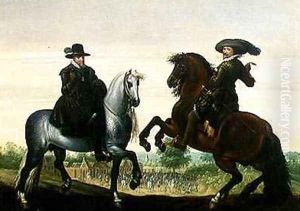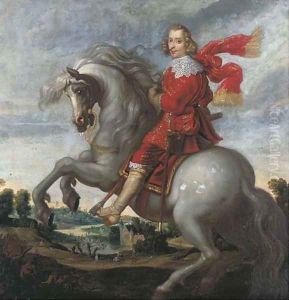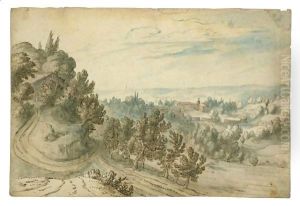Pauwels I van Hillegaert Paintings
Pauwels van Hillegaert was a Dutch Golden Age painter, primarily known for his works depicting battle scenes and military campaigns, as well as landscapes and portraits. Born in Amsterdam in 1596, he was part of a generation of Dutch artists who were pivotal in the development of the Dutch Golden Age of painting.
Van Hillegaert's early life and training are not well-documented, but it is believed that he may have been a pupil of the prominent history painter Pieter Cornelisz van Rijck. His works reflect a keen interest in the depiction of contemporary historical events, particularly the Eighty Years' War (1568–1648), during which the Dutch Republic fought for independence from Spanish rule.
Throughout his career, van Hillegaert became known for his skill in rendering the details of military life and the chaos of battle with a certain degree of elegance and order. He was adept at capturing the movement and drama of cavalry charges and troop formations, often set within expansive landscapes. His paintings often feature high horizons and a masterful use of light, which was characteristic of the Dutch landscape tradition.
In addition to his battle scenes, van Hillegaert also produced works that were more peaceful in nature, including hunting scenes and portraits. He was a member of the Guild of St. Luke in Amsterdam and, through his work, influenced subsequent generations of Dutch battle scene painters.
Pauwels van Hillegaert's contribution to the Dutch Golden Age was part of a larger movement that included artists like Rembrandt and Vermeer, who were contemporaries. His paintings captured a significant period in Dutch history and contributed to the national narrative of the newly independent Dutch Republic.
He died in Amsterdam in 1640, leaving behind a body of work that continues to be appreciated for its historical value and its artistry. Van Hillegaert's paintings can be found in various museum collections, offering insight into the Dutch military history and the artistic legacy of the 17th century.


